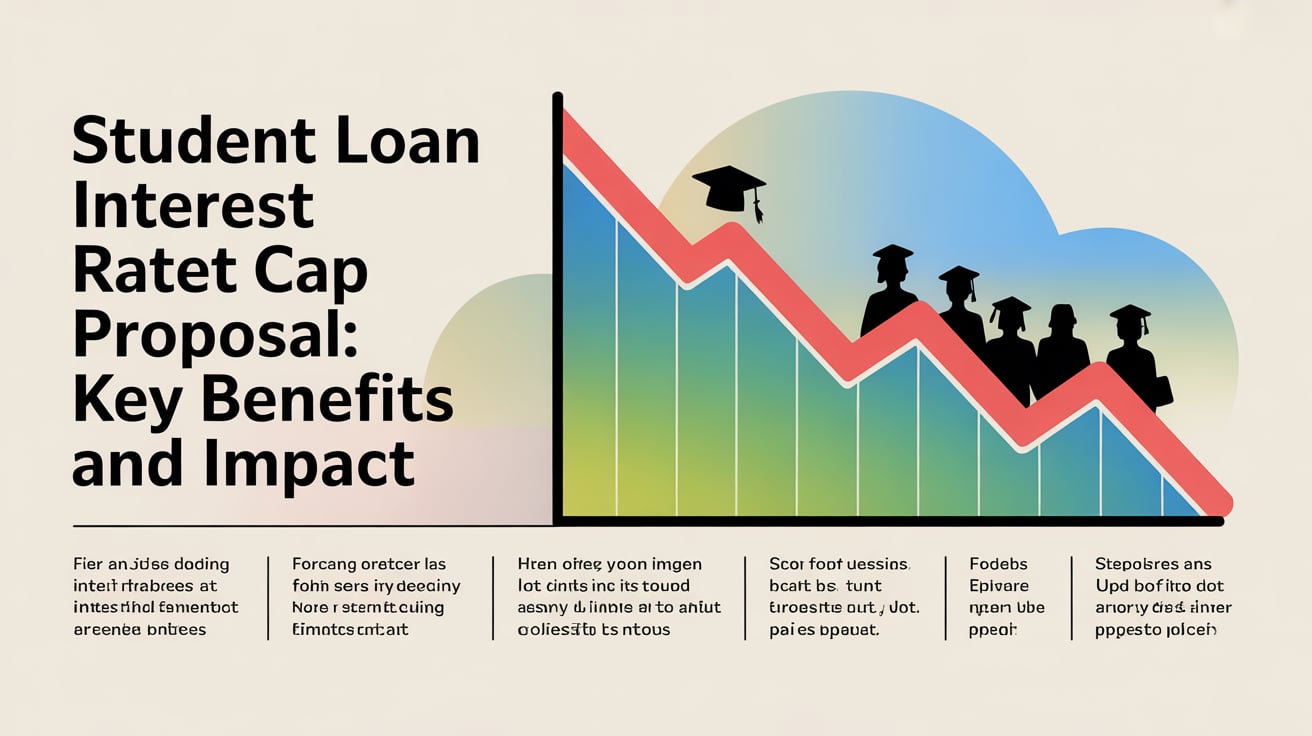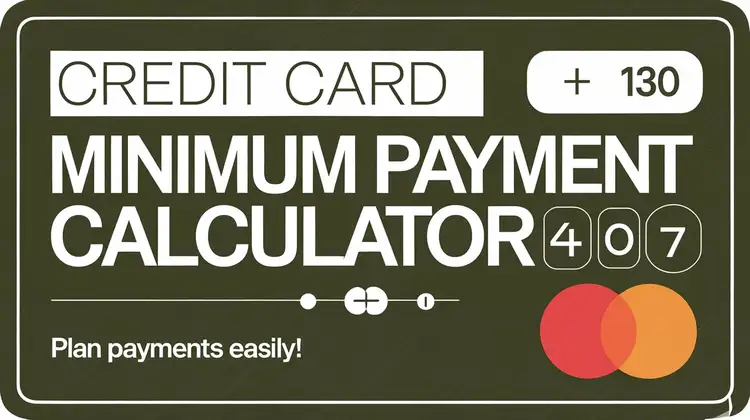Student Loan Interest Rate Cap Proposal: Key Benefits and Impact
Published: 20 Sep 2025
Introduction: Understanding the Student Loan Interest Rate Cap Proposal
Student loans are one of the biggest financial challenges that students face today. With tuition fees steadily rising across the country and living expenses adding to the financial burden, many students rely on loans to fund their education. However, one major issue that continues to cause anxiety among borrowers is the high interest rates on student loans.
In response to this growing concern, there has been an increasing push to introduce a student loan interest rate cap proposal. This proposal aims to limit the amount of interest that can be charged on student loans, making education more affordable and reducing the burden of debt for millions of borrowers. But what are the key benefits of this proposal? How will it affect borrowers and the broader education sector? In this article, we will explore the details of the student loan interest rate cap, its potential impact on borrowers, and the long-term benefits it could bring to the student loan landscape.
What is the Student Loan Interest Rate Cap Proposal?
Overview of the Proposal
The student loan interest rate cap proposal is a policy designed to limit the amount of interest that can be charged on student loans. The primary goal is to make education more affordable and reduce the burden of student debt. Under this proposal, the government would set a maximum interest rate that lenders can charge for federal and private student loans. The intention behind this is to protect borrowers from excessively high-interest rates and make the process of repaying loans more manageable.
Currently, the interest rates on student loans vary depending on the type of loan, loan term, and the borrower’s credit history. Federal student loans have fixed interest rates, but these rates can still be high. On the other hand, private student loans are often subject to variable interest rates, which can be influenced by the borrower’s creditworthiness and market conditions. The proposal seeks to introduce a ceiling on these rates, ensuring that students and graduates are not subject to exorbitant charges.

Types of Student Loans Affected
The student loan interest rate cap proposal would primarily affect two types of loans:
- Federal Student Loans: These are loans provided by the U.S. Department of Education. Interest rates on federal loans are currently set by Congress, but they can be high, especially for undergraduate and graduate students. The proposal would cap the interest rates on these loans, making them more affordable for borrowers.
- Private Student Loans: These loans are offered by private lenders, such as banks and credit unions. Private loans often come with variable interest rates, which can fluctuate based on the borrower’s credit score and market conditions. The interest rate cap proposal would limit the maximum rate that private lenders can charge, providing more financial certainty for students and graduates.
Benefits of the Student Loan Interest Rate Cap Proposal
1. Reduced Financial Burden for Borrowers
One of the most significant benefits of the student loan interest rate cap is the reduction in the financial burden placed on borrowers. Many students graduate with high levels of debt, and a significant portion of that debt comes from the interest accrued during the life of the loan. By limiting the interest rates, borrowers will be able to pay off their loans faster and at a lower cost.
For example, a student loan with a high-interest rate can increase the total amount paid over the life of the loan. With a rate cap, the total amount paid in interest would be significantly reduced, resulting in less debt for borrowers and potentially saving them thousands of dollars.
2. Greater Affordability for Future Borrowers
Under the proposal, future borrowers would benefit from lower interest rates, making education more affordable. High interest rates are often cited as a barrier to education, especially for students from low-income families. With lower interest rates, more individuals will be able to pursue higher education without the fear of overwhelming debt after graduation.
By reducing the cost of student loans, the interest rate cap could make it easier for students to access the education they need to succeed. This could also result in an increase in college enrollment rates, as students would feel more confident in their ability to manage their education expenses.
3. Improved Creditworthiness for Borrowers
Over time, one of the key advantages of the student loan interest rate cap proposal is the improvement in creditworthiness for borrowers. High-interest rates can make it more difficult for borrowers to make on-time payments, leading to missed payments and increased debt. This can negatively affect their credit scores, making it harder to qualify for other loans, including mortgages or car loans.
With lower interest rates, borrowers will have more manageable payments, which can help them stay on track with their loan repayments. Timely payments will reflect positively on their credit scores, making it easier for them to access other forms of credit in the future. This is especially important for young graduates starting out in their financial lives.

4. Economic Growth and Increased Spending Power
The student loan interest rate cap proposal could also have a positive effect on the broader economy. By reducing the burden of student debt, borrowers would have more disposable income, which they could spend on goods and services. This increase in consumer spending could stimulate economic growth and contribute to the overall health of the economy.
Moreover, lower student loan payments would free up resources for graduates to invest in other areas, such as homeownership, starting a business, or saving for retirement. These actions could further boost the economy and increase long-term financial stability for individuals.
5. Increased Financial Education and Awareness
The proposal also has the potential to increase awareness of student loan issues and encourage better financial literacy. With the interest rate cap in place, more individuals would become educated on the long-term impact of student loans and the importance of managing them responsibly. This could lead to improved financial habits and decisions among borrowers, especially regarding student loans and other types of credit.
The Potential Impact of the Student Loan Interest Rate Cap Proposal
1. On the Student Loan Industry
While the student loan interest rate cap proposal offers numerous benefits to borrowers, it could have a significant impact on the student loan industry. Lower interest rates may reduce the profitability of private lenders who rely on interest payments as a source of income. Additionally, the changes could impact the way federal student loans are administered, especially with respect to funding levels and the cost to the government.
However, the long-term benefits, including increased borrower satisfaction and reduced default rates, could ultimately make the system more stable. Lenders may adapt to these changes by offering more flexible loan terms, alternative repayment options, or more competitive products.
2. On Borrowers’ Long-Term Financial Health
The interest rate cap proposal could also have a positive effect on borrowers’ long-term financial health. With lower interest rates and more affordable payments, borrowers will be able to reduce their debt faster, resulting in less money paid in interest over the life of the loan. This would allow them to invest more in savings, homeownership, or other financial goals, contributing to their overall financial well-being.
For many borrowers, student loans represent the largest debt they will ever take on. Reducing the cost of these loans would have a ripple effect on their overall financial situation, enabling them to pursue a broader range of opportunities in their personal and professional lives.

3. On Higher Education Enrollment
The student loan interest rate cap could also impact higher education enrollment. With more affordable loans, students may be more likely to pursue higher education, including graduate and professional programs. This could lead to an increase in enrollment rates at colleges and universities, especially for low-income and underrepresented students who might otherwise be deterred by high borrowing costs.
In the long run, the increase in higher education enrollment could lead to a more educated workforce, contributing to economic development, innovation, and global competitiveness.
How Will This Proposal Affect Private Lenders?
1. Private Lenders’ Response
Private lenders will likely need to adapt to the interest rate cap in the event that it is passed. One potential outcome is that private lenders may shift their focus to other types of financing products, such as personal loans or alternative forms of credit. They might also need to innovate by offering more affordable loan products or flexible repayment terms.
However, the interest rate cap will likely help stabilize the lending environment by making borrowing more predictable for students, allowing private lenders to develop long-term customer relationships.
2. Competition Among Lenders
As a result of the interest rate cap, competition among private lenders could increase. With government-set limits on the interest rates, lenders will likely compete based on loan terms, repayment schedules, and customer service. This could lead to more innovation and flexibility in the student loan market, benefiting borrowers and encouraging more responsible lending practices.
FAQ: Student Loan Interest Rate Cap Proposal
The student loan interest rate cap proposal is a policy that limits the interest rate that can be charged on both federal and private student loans. The goal is to make education more affordable by reducing the amount of interest borrowers must pay over the life of the loan.
The interest rate cap will lower the overall cost of student loans by reducing the interest rates that borrowers are charged. This will result in lower monthly payments and faster repayment of loans, helping borrowers save money in the long run.
Yes, the interest rate cap would apply to both federal student loans and private student loans, ensuring that borrowers across all loan types benefit from more affordable financing.
The interest rate cap may affect the profitability of private lenders who rely on interest as a source of revenue. However, the benefits of lower default rates and improved borrower satisfaction could help stabilize the student loan market in the long run.
While the proposal has been discussed, its implementation depends on government approval. It may take some time before the interest rate cap is enacted, but it’s a critical step toward improving the affordability of higher education.

Conclusion: The Future of Student Loan Financing
The student loan interest rate cap proposal offers significant potential benefits for both borrowers and the broader education sector. By reducing the financial burden of student loans, this proposal can make higher education more accessible, affordable, and manageable for millions of students. Whether you’re a current student or a recent graduate, the interest rate cap can provide long-term relief, improve financial stability, and promote better financial health.
As the debate around the student loan interest rate cap continues, it’s crucial for policymakers to consider the broader impact this will have on the economy, lenders, and most importantly, the students who rely on these loans to fund their education.

- Be Respectful
- Stay Relevant
- Stay Positive
- True Feedback
- Encourage Discussion
- Avoid Spamming
- No Fake News
- Don't Copy-Paste
- No Personal Attacks

- Be Respectful
- Stay Relevant
- Stay Positive
- True Feedback
- Encourage Discussion
- Avoid Spamming
- No Fake News
- Don't Copy-Paste
- No Personal Attacks





